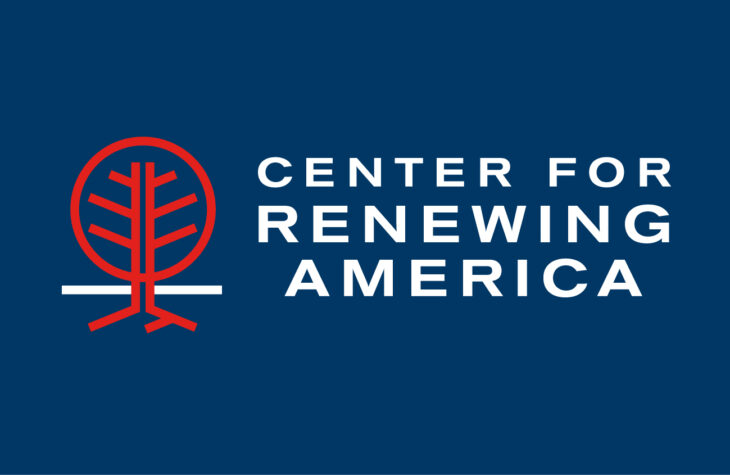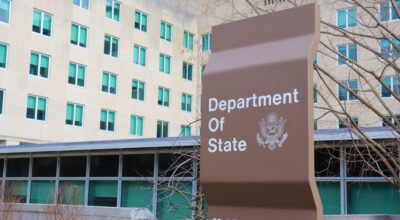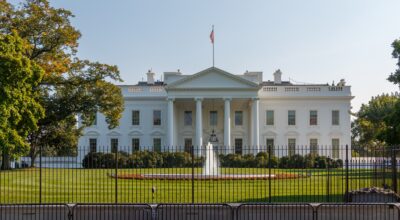
Policy Brief: The Biden “Infrastructure” Plan
Synopsis
President Biden recently unveiled a $2.3 trillion “infrastructure” proposal that his administration has dubiously billed the “American Jobs Plan.” Unfortunately, only about seven percent of the proposed spending goes to roads, bridges, airports, and ports: things that traditionally comprise federal infrastructure. The plan is at most 24 percent ‘infrastructure’ by even Washington’s over-generous standards. The remaining three-quarters of provisions are entirely unrelated and in far too many instances, radical slush fund giveaways designed to disguise far-left policy under the guise of ‘infrastructure.’
Policy Analysis
The American Jobs Plan (AJP) is predicated on a litany of misinformation and deceptive interpretations of what constitutes “infrastructure.” Such a framework will do little to build trust among the American public and will likely harm future legislative efforts to deal honestly with real infrastructure needs.
Infrastructure and Federalism
The extent to which the Biden proposal deals with traditional federal infrastructure is so small that it constitutes a mere fraction of the overall proposal. Only five percent ($115 billion) of the proposed $2.3 trillion in spending actually goes to the maintenance of roads and bridges. That number increases to seven percent when one includes airports and ports.
Even the Washington Post was hard-pressed to find more than 24 percent of the AJP as constituting ‘infrastructure.’ For their activist efforts to reach even that percentage, the Post had to stretch the definition of federal infrastructure to include expanding high-speed broadband Internet ($100 billion), ‘decarbonizing’ the energy grid by eliminating natural gas and coal ($100 billion), usurping local and state governments to replace lead pipes ($45 billion), and opening the subsidy spigot for Amtrak ($80 billion).
The fact that federal infrastructure is now being redefined as a slush fund of subsidies to a handful of massive corporate telecommunications firms for “rural broadband” is illustrative of the unsalvageable policy defects embedded within the AJP.
Additionally, local and regional transit systems should not be federally funded and were never intended to be classified as federal infrastructure. Indeed, the history of transit’s inclusion in the Highway Trust Fund mirrors much of the Biden administration’s AJP proposal: misdirection in pursuit of expanding the power of the federal government and narrow special interests.
The Highway Trust Fund (HTF), which is used for the maintenance of federal highways and roads, receives about 85 percent of its funding from the federal excise tax on gasoline and diesel. The remaining 15 percent is derived from sales taxes on heavy vehicles and excise taxes on the tires used by large freight trucks. Transit fees do not contribute to the HTF funding stream, yet transit diverts billions of dollars from core HTF priorities.
Such diversions in the HTF, of which there are many, have exorbitant annual costs and pit the interests of the urban elite in a handful of large cities against everyone else.
For example, the Mass Transit Account (MTA) diversion siphoned off an astounding 18 percent of total HTF dollars in FY2019 totaling nearly $10 billion. That is money that could and should be going to the maintenance of roads and the repair of the small percent of bridges in poor condition.
Despite ridership on mass transit systems steadily declining and serving as only five percent of Americans’ mode of transportation to work, mass transit is receiving nearly 400 percent more funding within the HTF than the actual percentage of Americans who utilize transit for their mobility needs. This is unfair and serves as a root cause for why existing federal infrastructure needs have not been met.
In order to reorient federal transportation and infrastructure policy to better serve American families and communities, Congress should revisit what is truly federal in nature and what truly constitutes infrastructure:
Actual Federal Infrastructure Responsibilities
- Maintenance of the Interstate Highway System
- Maintenance and modernization of major ports, dams, and bridges
- Maintenance and modernization of major airports
While they may be worthwhile public policy pursuits, replacing lead pipes, operating local and regional transit systems, and expanding high-speed Internet do not constitute federal infrastructure.
Those are issues best left to state and local governments or the private sector. Embracing greater federalism with regard to our nation’s infrastructure needs will help prioritize and solve real infrastructure needs.
Stealth Green New Deal
With the United States fast approaching $30 trillion in national debt, the Biden administration’s $2.3 trillion price tag for the AJP is fiscally reckless. Such irresponsible spending is especially dangerous, however, when paired with ambitious proposals designed to appease far-left activists.
The AJP attempts to disguise the implementation of portions of the “Green New Deal” as ‘infrastructure’ spending. This comes through a variety of outlined initiatives:
- Spending $100 billion to “decarbonize” the national energy grid by 2035. This radical move would in effect eliminate the natural gas and coal industries by transforming the grid to rely on 100 percent “carbon-free electricity” powered exclusively by renewable energy like wind and solar.
- Spending $213 billion to, among other things, “renovate” 1 million public housing units with “energy efficient” retrofits and incentivize private homeowners to switch to “clean energy.”
- Requiring all federal buildings to purchase “clean energy” for their full-time power generation. This includes military bases and defense structures, putting our national security apparatus in severe jeopardy of failure if the sun is not shining or the wind is not blowing.
- Subsidizing a handful of electric vehicle (EV) companies with $174 billion despite EVs comprising less than 2 percent of all light-duty/personal vehicles in the U.S. This would also eliminate 50,000 diesel stations (critical for our truck/freight supply chain) and replace them with 500,000 electric charging stations.
- Creating a $10 billion “Civilian Climate Corps” to promote “environmental justice” and serve as a slush fund to expand union power in the workforce.
The job losses from these policies will be felt across all industries. Those most directly impacted will be blue-collar jobs in the oil, coal, natural gas, fuel delivery, and trucking industries. As of 2019, these industries account for nearly 6 million jobs.
Empowering Unions
The AJP proposal serves as a massive taxpayer-backed power grab for Big Labor. The proposal links some $1.1 trillion of the plan’s total $2.3 trillion in spending to unionized workers throughout the proposal, tying specific buckets of taxpayer money to “good-quality union jobs” and “union organizing.”
For example, there is strong evidence that the $400 billion allocated for “home care services” will largely benefit the Service Employees International Union (SEIU).
But it gets worse than mere political nepotism disguised as critical infrastructure. The proposal also calls for the enactment of the so-called PRO Act, which would effectively overturn state right-to-work laws by allowing unions to bypass state measures currently protecting workers from being forced to pay union dues even if they’re not a part of a union.
This federal usurpation of states would greatly expand union money and political influence in all 50 states resulting in overflowing campaign coffers that would be used almost exclusively for far-left officials and candidates.
Slush Funds
The AJP also spends hundreds of billions to create new corporate slush funds. While much of the media is focused on the plan’s call to raise the corporate tax rate to 28 percent in a futile attempt to pay for the $2.3 trillion price tag, the reality is that corporate America wins big under the Biden administration’s plan.
Among the litany of corporate slush funds embedded in the proposal is $300 billion to subsidize big manufacturers to create ‘clean energy’ products. There is also $100 billion to subsidize a handful of large telecommunication firms to “expand” high-speed broadband.
There is also a $45 billion slush fund for large unionized construction firms with well-connected lobbyists to receive EPA grants for replacing lead pipes.
This is little more than corporate welfare intended to pad profit margins and is the equivalent of taking with one’s right hand to give to the left. Furthermore, there is little detail on how these massive allotments would be dispersed.
Implications
The implications of the Biden administration’s American Jobs Plan are far-reaching and potentially devastating.
Full analysis of the plan’s actual spending on federal infrastructure suggests that well over 90 percent of the AJP’s proposed spending is not federal in scope, constitutes corporate welfare, or remains entirely unrelated to the very notion of infrastructure.
With the president recently signing a partisan $1.9 trillion stimulus bill under the guise of “coronavirus relief” that contained only $15 billion (0.8 percent) for vaccine distribution funding, the federal government is amassing debt at an alarming pace.
The speed and size of our national debt is a looming threat to America’s economic and national security. And the plan’s attempt to require our national defense apparatus and our national power grid to rely on unreliable and unsustainable sources of energy further underscores the AJP’s threat to the security of our nation.
Additionally, imposing a federal bureaucracy on state and local issues will result in slower and more expensive projects, expand corruption at all levels of government, and further divorce citizens from their elected officials in their hometowns and state capitals.
Perhaps no item in the AJP proposal illustrates this danger of hometown corruption more than the $5 billion in competitive grant money for local governments. This is federal money that would bypass state legislatures and go directly to cities that agree to strike down zoning laws prohibiting apartment complexes in traditional neighborhoods comprised of single-family homes.
Such a measure is aimed at abolishing the ability of families and communities to shape their neighborhoods.
But the harmful implications of the AJP don’t stop there. Much of the spending reaches directly into issues that are deeply personal. For example, issues like child care and home care are of great importance to millions of Americans. Spending hundreds of billions to reward union allies and shove a massive federal bureaucracy between families and those services in the name of “infrastructure” guarantees dysfunction and will lead to diminished care quality, greater regulatory hurdles for families, and a higher potential for industry corruption.
Indeed, the special interest feeding frenzy has already begun and the AJP has not even been officially introduced in the U.S. Congress.
Government-funded child care activists are already complaining that an ‘infrastructure’ plan does not directly subsidize their workers. Dam safety proponents are bemoaning the AJP as not adequately safeguarding communities at risk of flooding. And corporate CEOs are grumbling that the White House has not engaged in “enough outreach” for them, allowing for their well-connected lobbyists to carve out better deals.
The risk of corruption under the Biden proposal is extraordinarily high and cannot be understated. This is because the bill is not an infrastructure bill: it is a $2.3 trillion opportunity for myriad Solyndra-style abuses of American taxpayers and citizens.
The practical costs of the AJP are:
- Widespread job losses across key industries (including coal, oil, trucking, storage, and natural gas).
- Higher consumer energy prices from costlier and less reliable sources of so-called “clean energy.”
- Diminished state and local control over a myriad of public policy issues with right-to-work laws effectively overturned and local zoning laws weakened.
- Weakened national security from higher debt and overreliance on unsustainable energy.
- Financially and politically empowered interest groups (Big Labor, Big Business, government workers, climate activists, etc.) aligned with far-left causes.
Concluding Assessment
The Biden administration’s ‘American Jobs Plan’ is not an infrastructure plan. It is a proposal that marries egregious levels of spending unrelated to real federal infrastructure needs with radical far-left policies designed to reward political allies.
In turn, the very idea of infrastructure risks being turned into a cheap punchline, devoid of both real and statutory meaning. And the public trust risks being further eroded by political leaders and advocacy groups obsessed with securing a piece of the taxpayer-funded pie.
The administration should abandon poorly-conceived attempts to convince citizens into believing that subsidizing mega-corporations, rewarding Big Labor, and embarking on activist climate crusades for far fetched and dangerous green policies constitutes federal infrastructure.
Instead, Congress and the White House should take an honest look at what our real federal infrastructure needs are, what responsibilities should be transitioned to state and local authorities or the private sector, and what policies will allow American communities to thrive absent the heavy hand of government bureaucracy.



